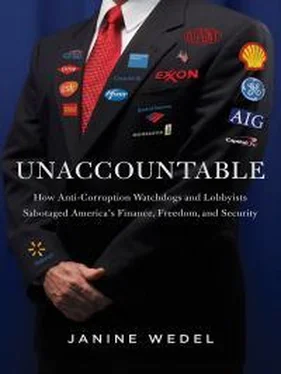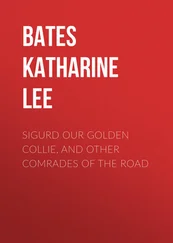21. The principal-agent theory is broadly influential in economics and public policy.
22. In terms of scholarship, as economists Andrei Shleifer and Robert W. Vishny wrote in 1993, most economic studies of corruption “focus on the principal-agent model of corruption” (Andrei Shleifer and Robert W. Vishny, “Corruption.” The Quarterly Journal of Economics , vol. 108, no. 3, August 1993, p. 599). For gold-standard treatment of the principal-agency theory by an economist, see the work of Susan Rose-Ackerman, who has been publishing on the economics of corruption since 1975. She attributes the “wide range of productive research” in the field largely to a focus on “the piece of the broader concept most susceptible to economic analysis—monetary payments to agents.” These payments are intended to “induce agents to ignore the interests of their principals and to favor . . . the bribers instead” (Susan Rose-Ackerman, ed., International Handbook on the Economics of Corruption . Cheltenham, UK/Northampton, MA: Edward Elgar, 2006, p. xiv). (A summary of additional approaches to corruption in the economics literature is found in Vincent G. Fitzsimons, “Economic Models of Corruption,” Corruption and Development: The Anti-Corruption Campaigns, Sarah Bracking, ed. New York: Palgrave Macmillan, 2007, pp. 46-51.)
With regard to the principal-agent theory as undergirding anti-corruption efforts, see, among others, Monika Bauhr and Naghmeh Nasiritousi. They write: “Following the logic of the principal-agent framework, the anticorruption regime has adopted a large set of policies, or anti-corruption ‘toolkits,’ that improves the opportunities for these principals to monitor agents: increased transparency, a free press, democratization, checks and balances, decentralization and privatization. However, if corruption is unobtrusive, its effects indirect and costs divided between a large number of actors or taxpayers, the very condition upon which these measures build may not be met. If corruption is unobtrusive, a very limited number of actors may engage in activities against corruption and anticorruption measures will suffer from a lack of ‘principals’” (Monika Bauhr and Naghmeh Nasiritousi, “Why Pay Bribes? Collective Action and Anticorruption Efforts.” Working Paper Series 2011:18, QOG The Quality of Government Institute, December 2011, pp. 3-4).
23. Robert Klitgaard, Controlling Corruption. Berkeley/Los Angeles/London: University of California Press, 1988, pp. 7, 21.
24. Susan Rose-Ackerman, ed., International Handbook on the Economics of Corruption . Cheltenham, UK/Northampton, MA: Edward Elgar, p. xvii. Susan Rose-Ackerman’s 1975 article in the Journal of Public Economics analyzed penalties for corrupt transactions in U.S. laws and conditions (pp. 197-198) and policy implications also grounded in those laws and conditions (pp. 202-203) (Susan Rose-Ackerman, “The economics of corruption.” Journal of Public Economics , vol. 4, 1975.) Her subsequent 1978 Corruption: A Study in Political Economy referenced numerous examples at the federal, state, and municipal levels in the United States and the laws that apply to them (pp. 187-203) (Susan Rose-Ackerman, Corruption: A Study in Political Economy . New York: Academic Press, 1978).
25. Medical metaphors are common, not only in the development and corruption literature, but in the economics literature more broadly (see János Kornai, “The health of nations: reflections on the analogy between economics and medical science,” Kyklos 36, 1983, pp. 191-212).
26. The End of History , of course, is the title of Francis Fukuyama’s influential book, The End of History and the Last Man (New York: Free Press, 1992).
27. See, for example, Gary S. Becker, “To Root Out Corruption, Boot Out Big Government.” Business Week , January 31, 1994 (http://www.businessweek.com/stories/1994-01-30/to-root-out-corruption-boot-out-big-government); Gary S. Becker, “If You Want to Cut Corruption, Cut Government.” Business Week , December 11, 1995, p. 26 (http://www.businessweek.com/stories/1995-12-10/if-you-want-to-cut-corruption-cut-government). Becker’s oft-cited academic work on the subject is: Gary S. Becker and George J. Stigler, “Law Enforcement, Malfeasance, and Compensation of Enforcers.” Journal of Legal Studies , vol. 3, no. 1, January 1974, pp. 1-18.
28. For further detail, see Janine R. Wedel, Collision and Collusion: The Strange Case of Western Aid to Eastern Europe . New York: Palgrave, 2001, pp. 27-28.
29. See, for example, “Corruption Charges Force Top Polish Police Officers to Quit.” New York Times, August 14, 1994 (http://www.nytimes.com/1994/08/14/world/corruption-charges-force-top-polish-police-officers-to-quit.html); and Alan Cowell, “East Europe Is a Land of Opportunity to the Mafia.” New York Times, September 2, 1993 (http://www.nytimes.com/1993/09/02/world/east-europe-is-a-land-of-opportunity-to-the-mafia.html).
30. The article reads: “As enemies go, the global corruption hydra has proven a frustrating one: lop off one of their heads and dozens more continue with their hideous damage.” Review & Outlook, “Commercial Corruption.” The Wall Street Journal Europe , January 3-4, 1997.
31. During the Cold War, economists, political scientists, sociologists, anthropologists, criminologists, and legal specialists contributed to the literature on corruption. See Janine R. Wedel, “Rethinking Corruption in an Age of Ambiguity.” Annual Review of Law and Social Science , vol. 8, December 2012, pp. 454-460.
32. The term “Third World” began to gain wide currency in the 1950s to denote countries that were not aligned with either the United States or the Soviet Union during the Cold War (see, for instance, the work of social critic Pascal Bruckner, The Tears of the White Man: Compassion as Contempt . New York: Free Press, 1986). Economists Peter T. Bauer and Basil S. Yamey (Peter T. Bauer and Basil S. Yamey, “East-West/North-South: peace and prosperity?” Commentary 70, 1980, pp. 57-63) and Bruckner (op. cit.) demonstrated that what Third World or underdeveloped countries had in common (with few exceptions) was that they were actual or potential recipients of international economic development schemes and foreign aid, not hunger, poverty, stagnation, exploitation, or race. Bauer and Yamey explained: “Official foreign aid has been the unifying characteristic of this huge, variegated, and utterly diverse collectivity ever since its components began to be lumped together from the late 1940s onward as, successively, the ‘underdeveloped world,’ the ‘Third World,’ and now, the ‘South.’ These expressions never made any sense except as references to a collectivity of past, present, or prospective aid recipients” (Bauer and Yamey, op. cit., p. 58).
33. Economists who encountered developing countries often stumbled on the issue of corruption. Political scientists, too, were often introduced to corruption while studying the Third World, albeit while concentrating on colonial and postcolonial states, not economic development, as was the case with the economists.
34. Nye emphasized, however, that corruption is not “a uniquely Afro-Asian-Latin American problem” (Joseph S. Nye, “Corruption and political development: a cost-benefit analysis.” American Political Science Review, vol . 16, 1967, p. 418).
Grappling with the intellectual debates of the day, political scientists pondered corruption in the context of real-world events and emerging systems. Their definitions and approaches to corruption emphasized the violation of norms and formal rules. Nye defined corruption as “behavior which deviates from the formal duties of a public role because of private-regarding (personal, close family, private clique) pecuniary or status gains; or violates rules against the exercise of certain types of private-regarding influence.” Joseph S. Nye, “Corruption and political development: a cost-benefit analysis,” American Political Science Review, vol . 16, 1967, p. 419 [emphasis added].
Читать дальше












